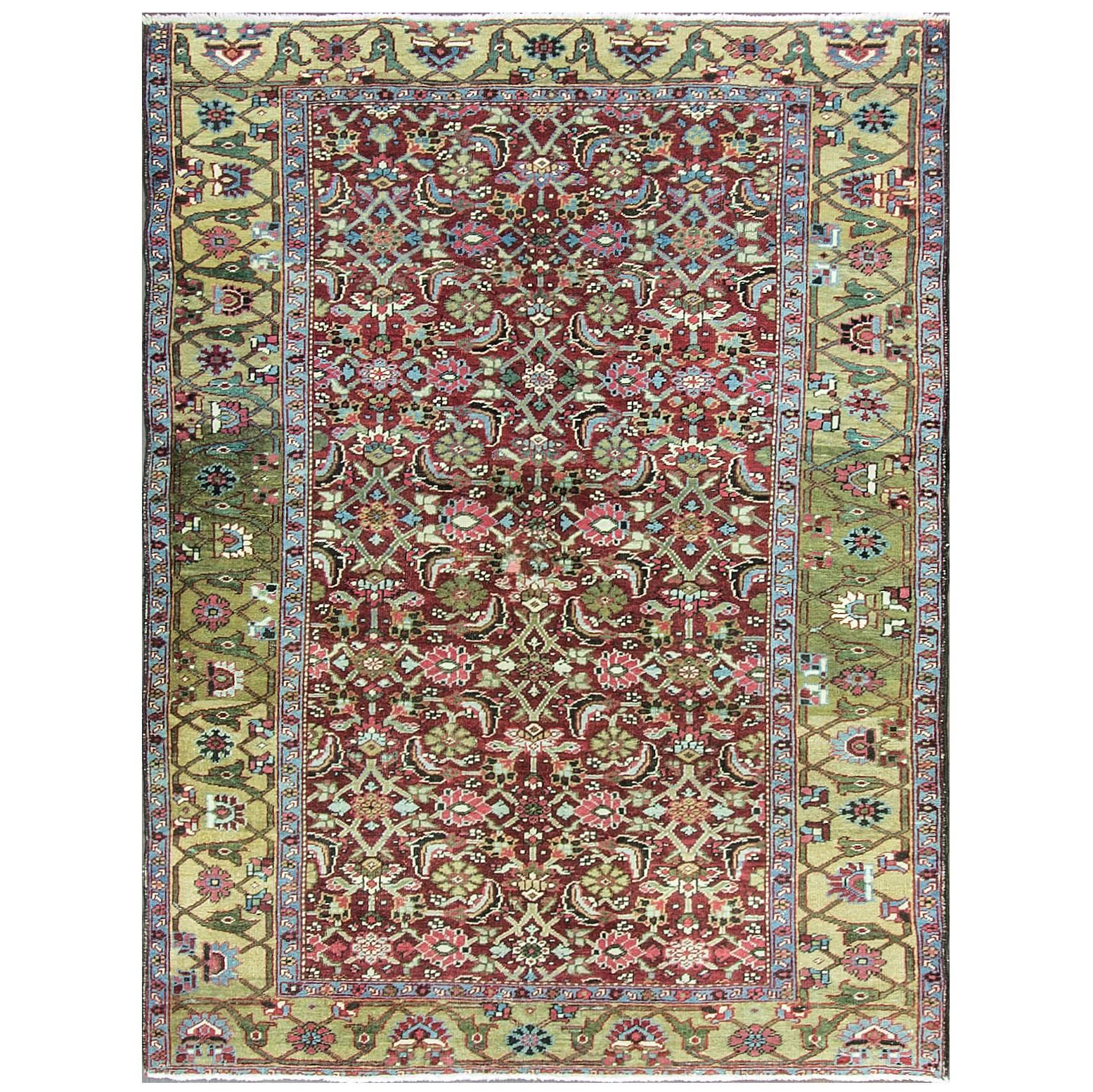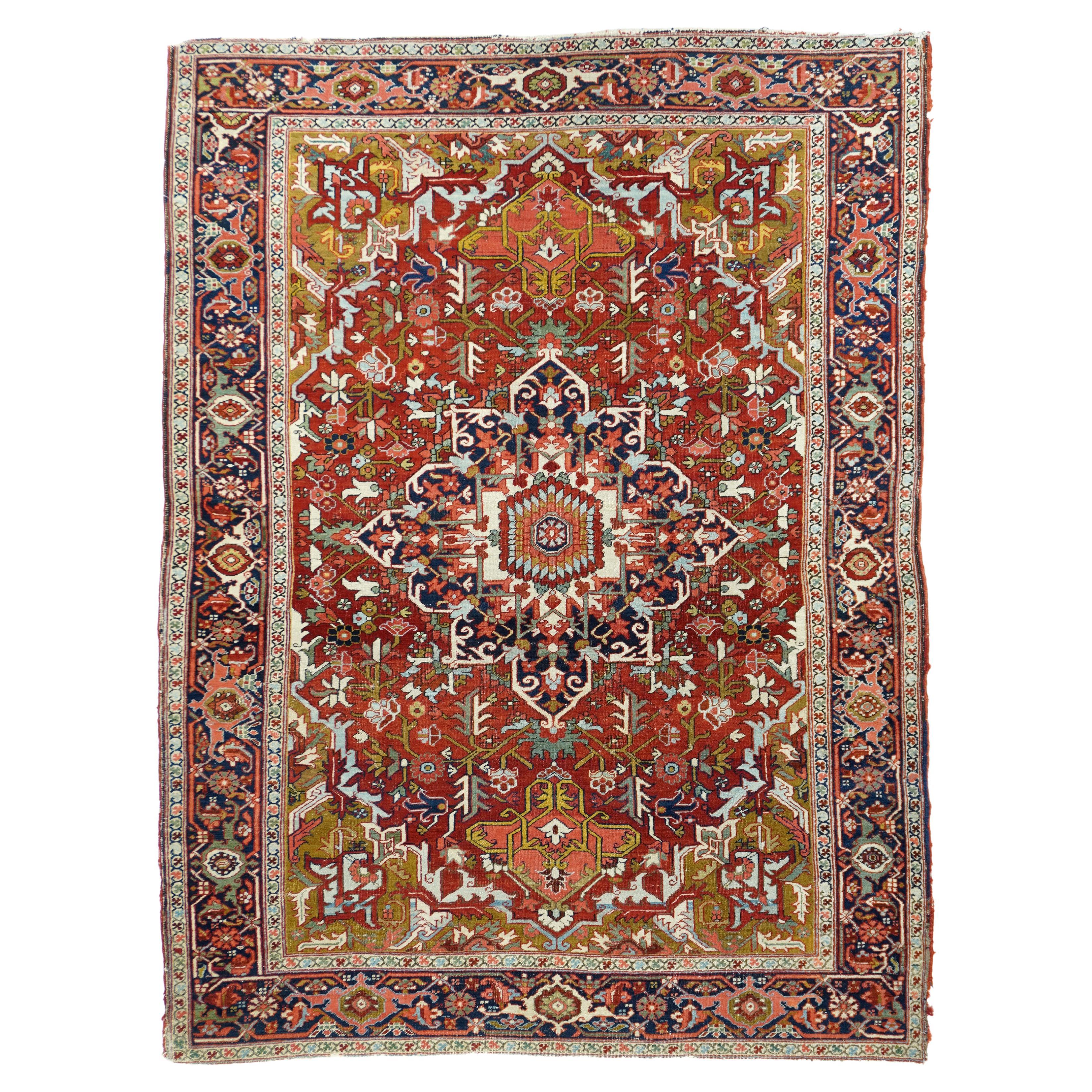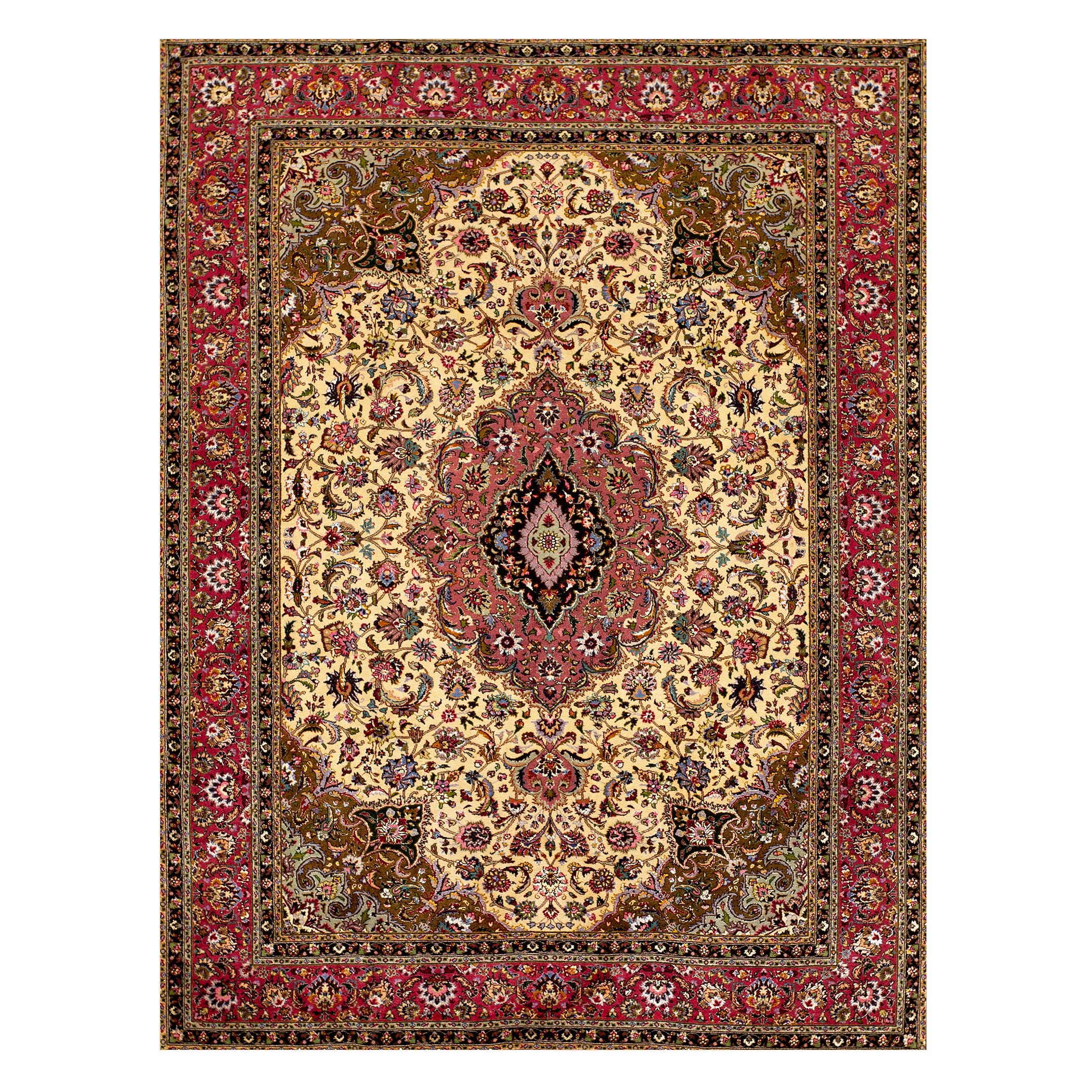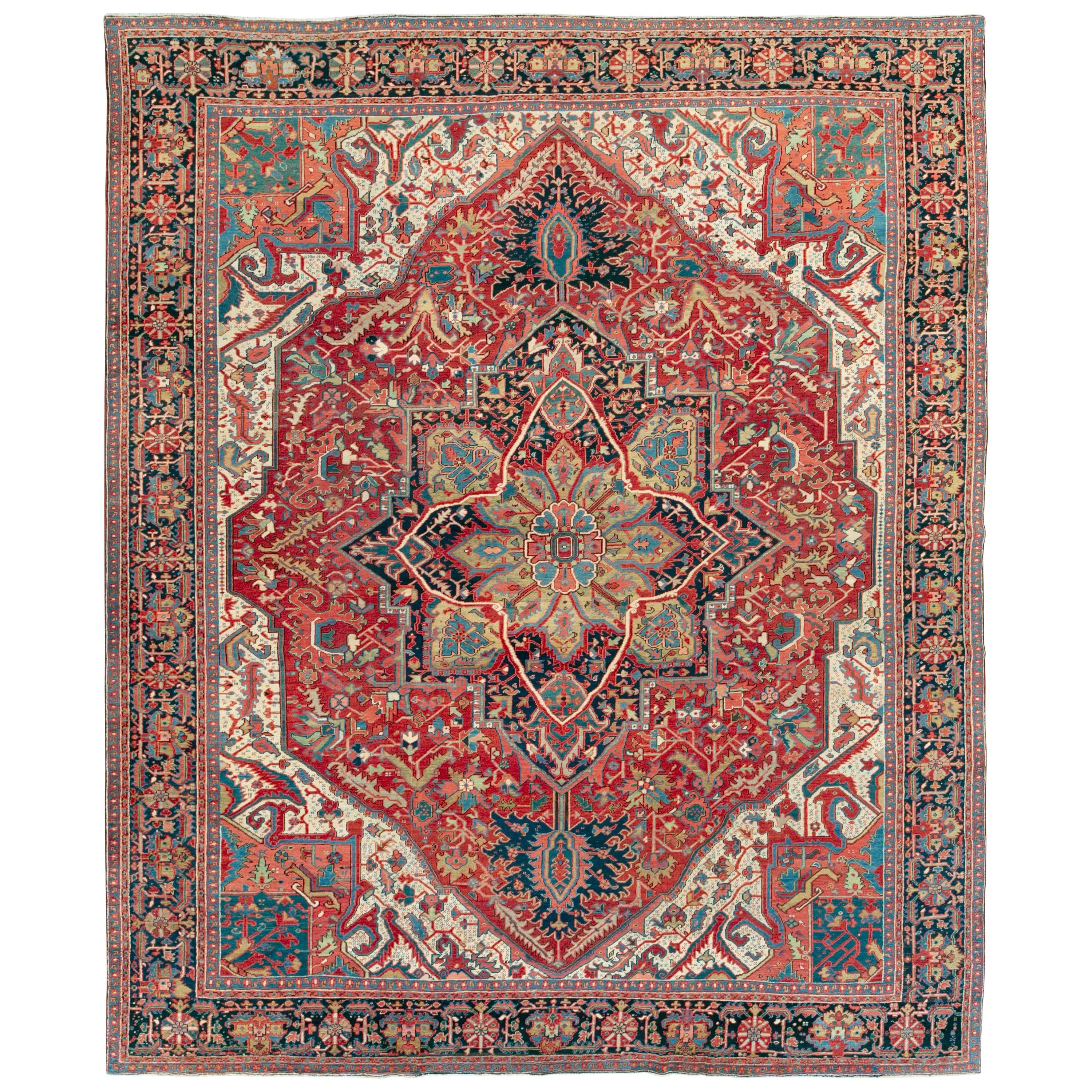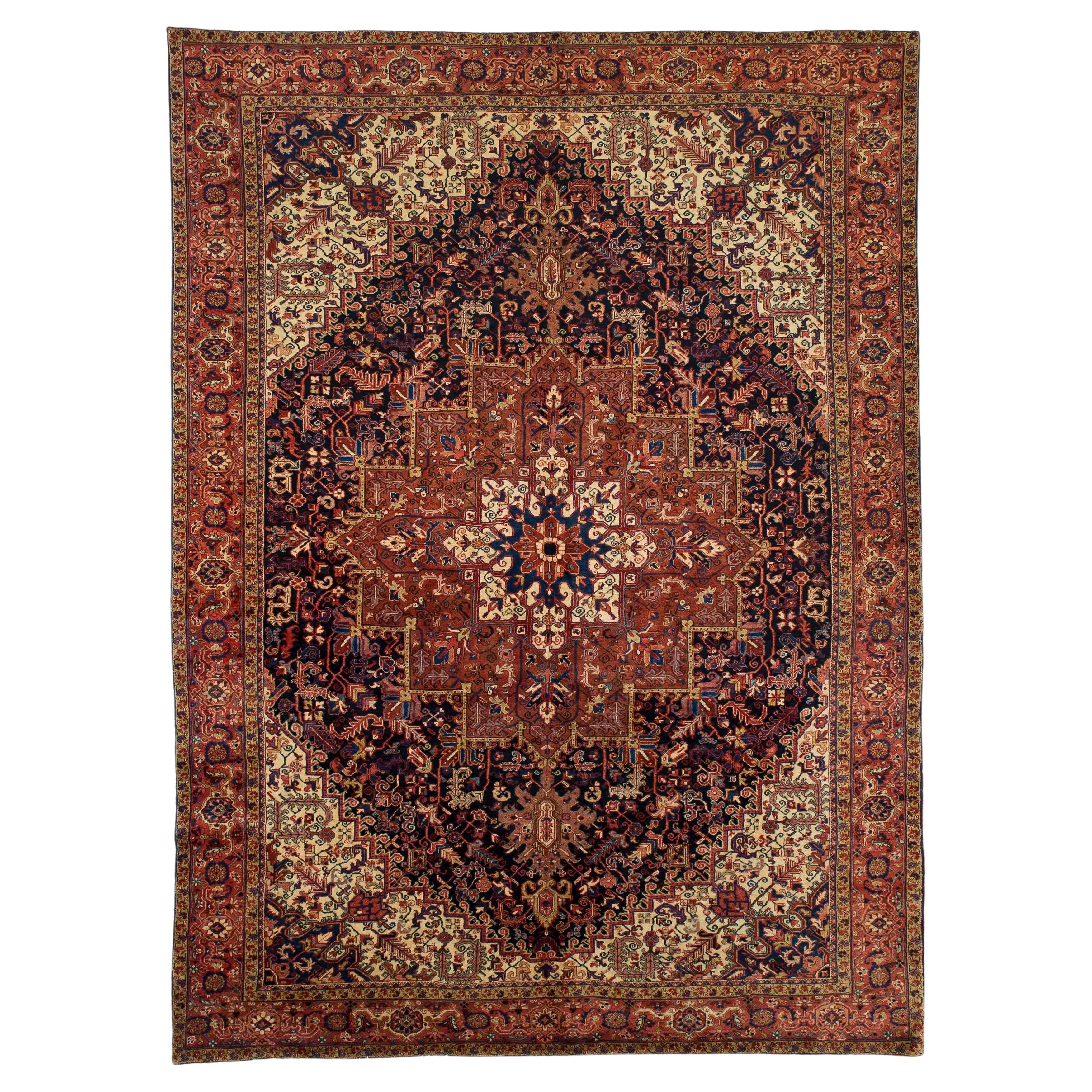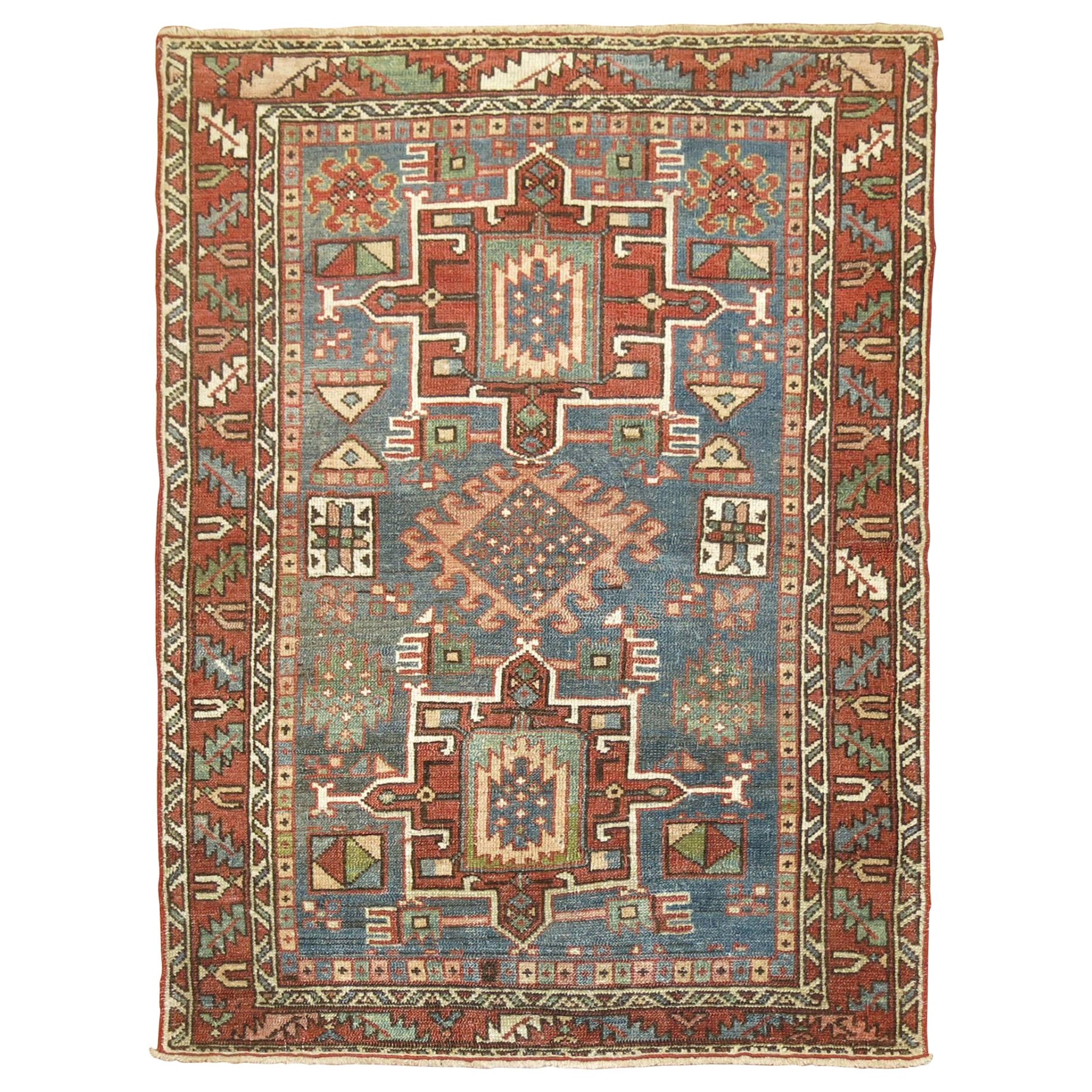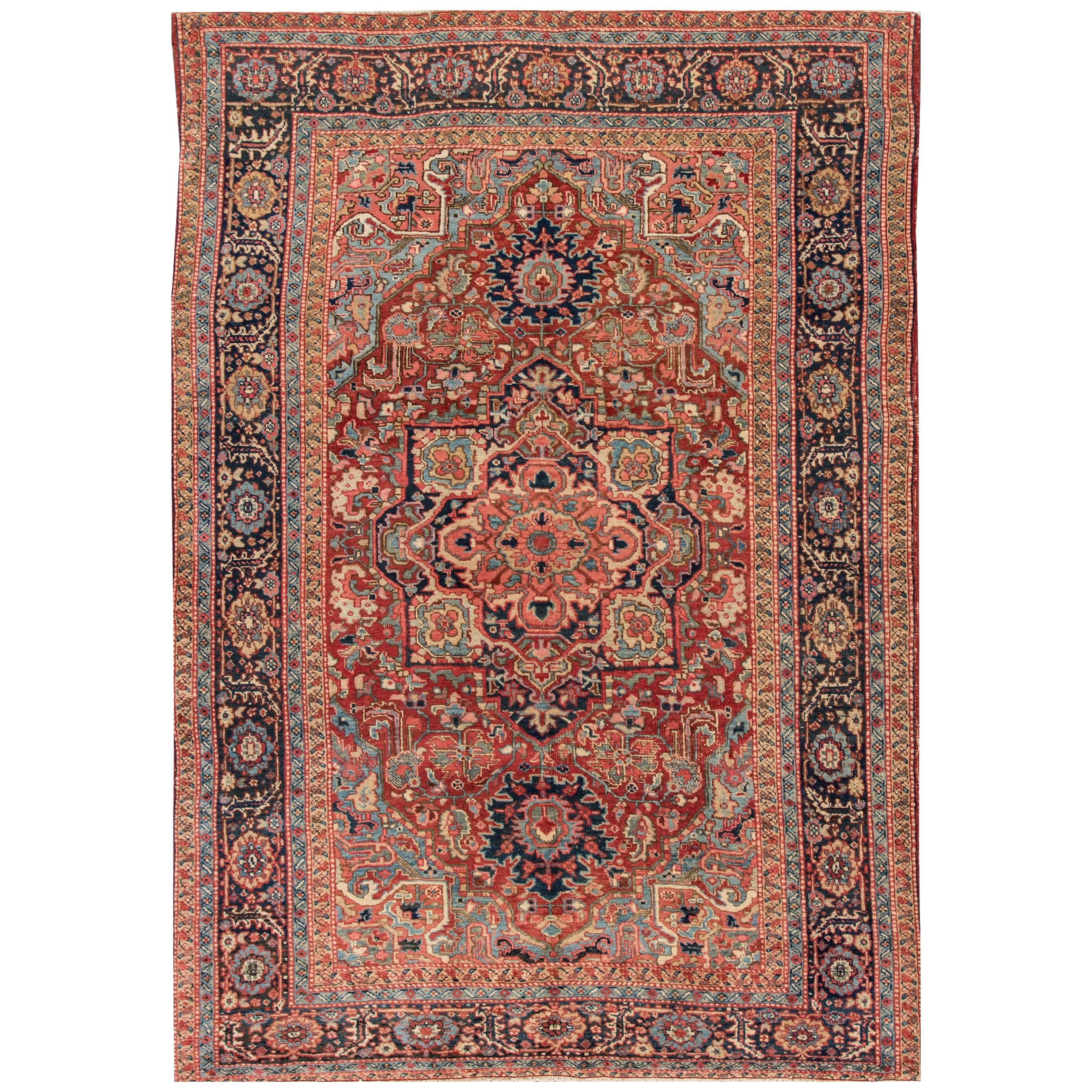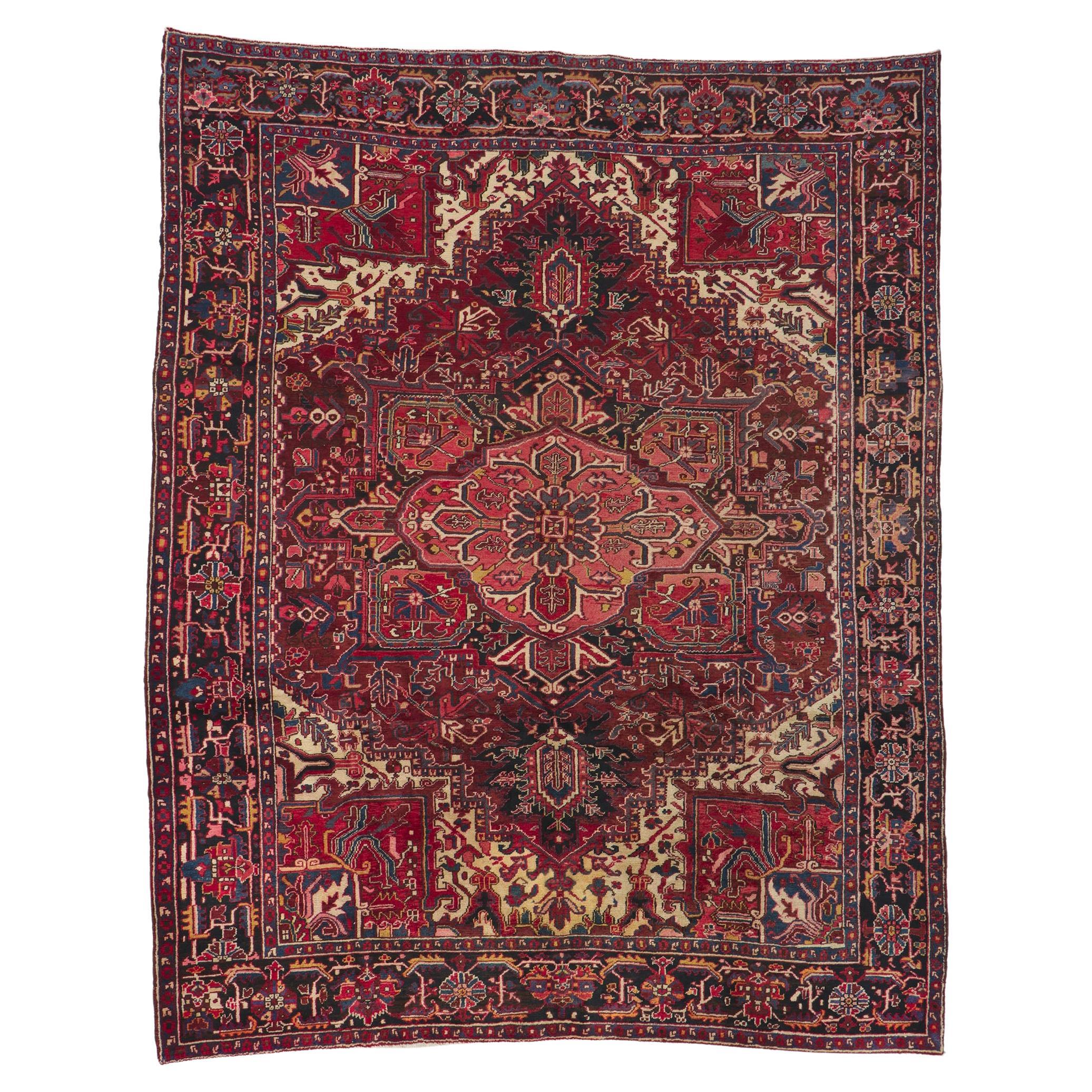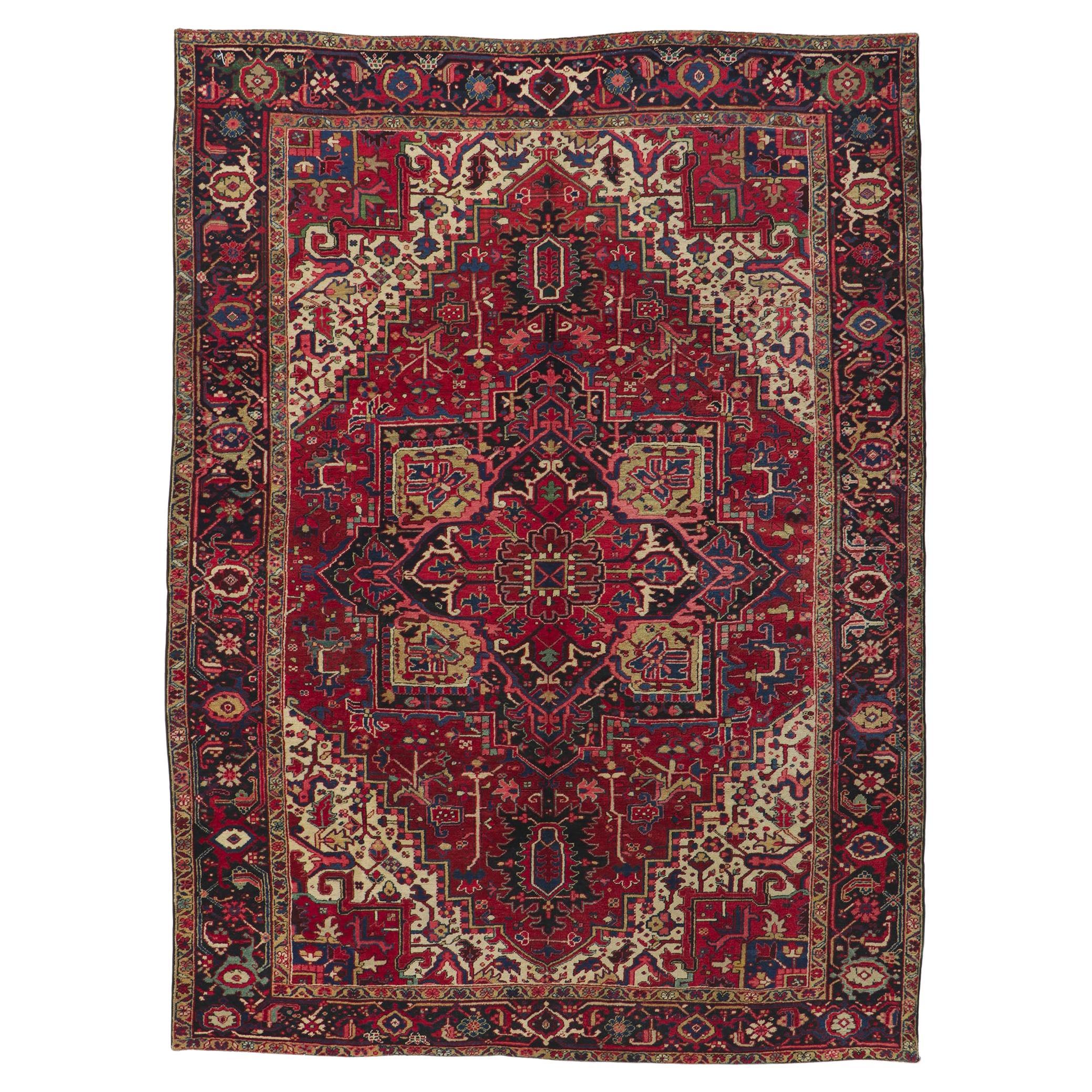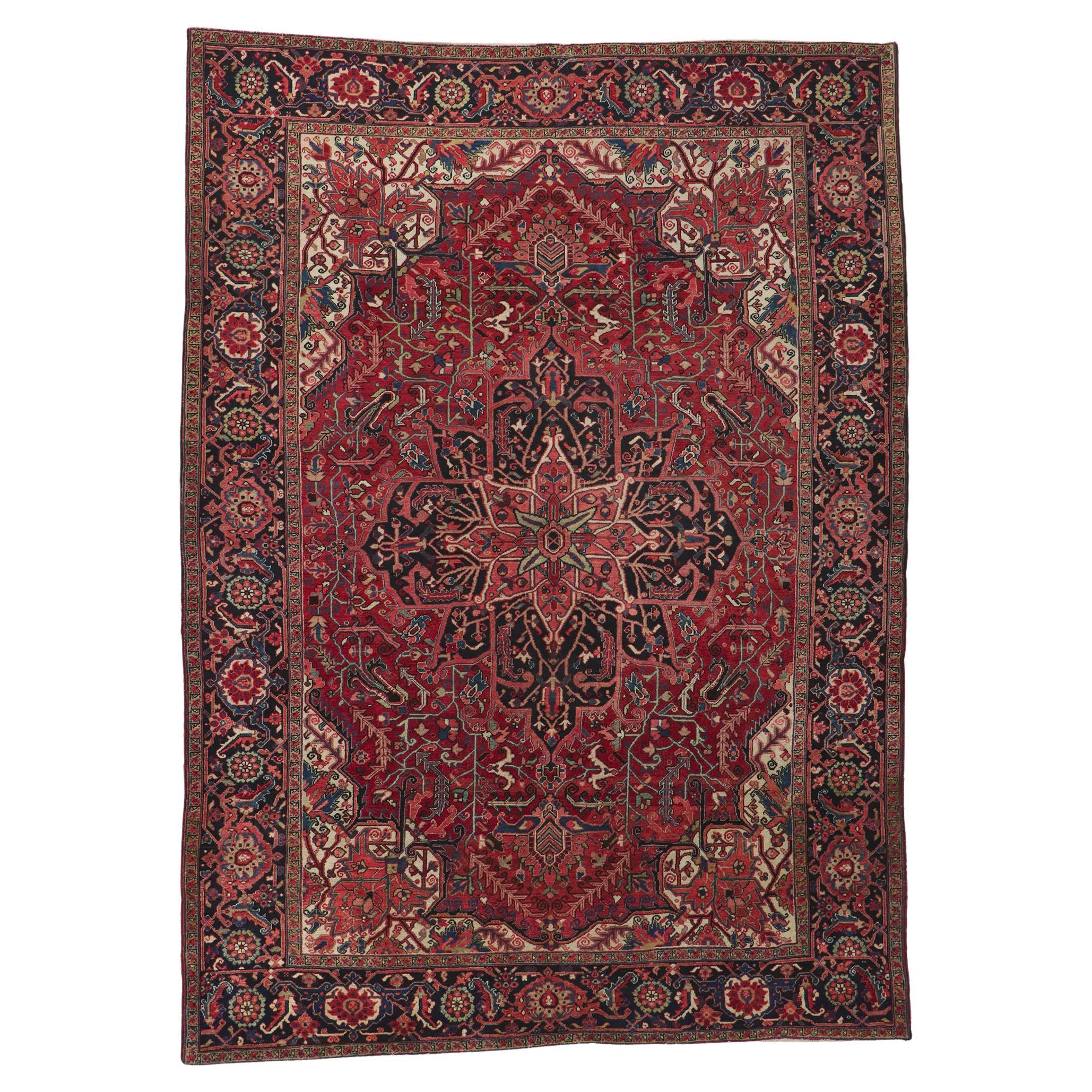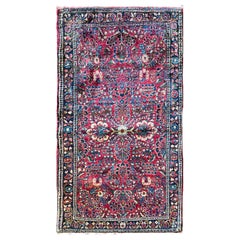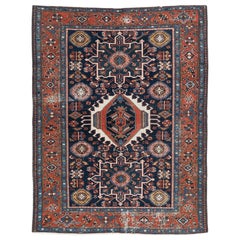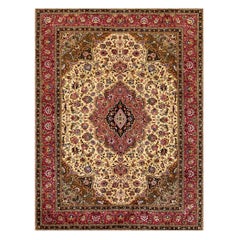
Antique Persian Heriz Rug, 4'10" x 6'3"
View Similar Items
Want more images or videos?
Request additional images or videos from the seller
1 of 8
Antique Persian Heriz Rug, 4'10" x 6'3"
About the Item
- Dimensions:Width: 58 in (147.32 cm)Length: 75 in (190.5 cm)
- Style:Heriz Serapi (In the Style Of)
- Materials and Techniques:Wool,Hand-Woven
- Place of Origin:
- Period:
- Date of Manufacture:1930
- Condition:
- Seller Location:Evanston, IL
- Reference Number:Seller: 166581stDibs: LU108006217983
About the Seller
4.8
Vetted Seller
These experienced sellers undergo a comprehensive evaluation by our team of in-house experts.
Established in 1978
1stDibs seller since 2014
247 sales on 1stDibs
Typical response time: 3 hours
More From This SellerView All
- Antique Persian Heriz/Serapi Rug, 4'10" x 6'6"Located in Evanston, ILUnusual beautiful and colorful Persian Heriz rug, circa 1900, with vegetable dyes and abrash. Heriz rugs are Persian rugs from the area of Heris, East Azerbaijan in northwest Iran, n...Category
Antique Early 1900s Persian Heriz Serapi Persian Rugs
MaterialsWool
- Antique Persian Sarouk Rug, c-1920, 2'6" x 4'10"Located in Evanston, ILAntique handmade Northwest Persian Sarouk rug, c-1920, 2'6" x 4'10", fine wool, in red and blue color and traditional floral design and this rug has been woven in high quality, the c...Category
Early 20th Century Persian Sarouk Farahan Persian Rugs
MaterialsWool
- Antique Persian Afshar Carpet, 4'10" x 9'4"Located in Evanston, ILSize: 4'10" x 9'4" - 147 cm x 284 cm. Origin: Southwest Persia. Period: circa 1880. Materials: Wool pile, wool warp and weft. Condition: Very good minor restorations. Antique Afshar ...Category
Antique 1870s Persian Tribal Persian Rugs
MaterialsWool
- Antique Persian Serapi Rug, 4'11" x 6'3"Located in Evanston, ILExquisite and timeless, this Antique Persian Serapi rug, circa 1900, measures 4'11" x 6'3" and hails from Persia. In impeccable condition, it boasts a captivating central design feat...Category
Antique Early 1900s Persian Serapi Persian Rugs
MaterialsWool
- Antique Persian Dragon Heriz/Serapi Carpet, 7'7" x 10'.Located in Evanston, ILGorgeous antique Persian Heriz carpet with all-over design and breathtaking red brick background color. Heriz rugs are Persian rugs from the area of Heris, East Azerbaijan in northwe...Category
Vintage 1920s Persian Heriz Serapi Persian Rugs
MaterialsWool
- Antique Qashqai/ Caucasian Kilim/Rug 4'10" x 9'Located in Evanston, ILThe polychrome field with horizontal bands of mustard, midnight blue, powder blue, green, and ivory rectangular motifs. In the 16th century the predecessors of the Qashqai were in wh...Category
Antique Late 19th Century Persian Kilim Persian Rugs
MaterialsWool
You May Also Like
- Antique Red Heriz Serapi Rug 4'10'' x 6'9''Located in New York, NYHeriz rugs are one of the most famous rugs from Iran, because of their very unique and distinguishable style. Heriz is a city located in northwestern Iran, near the city of Tabriz, w...Category
Early 20th Century Persian Heriz Serapi Persian Rugs
MaterialsWool, Cotton
$6,000 Sale Price69% Off - Antique Distressed Brick Red Persian Heriz Area Rug 4'1 x 6'3Located in New York, NYAntique distressed brick red Persian Heriz area rug, 4'1 x 6'3. A lightly distressed antique Heriz. the rug has a solid foundation and will stand up to the rigors of normal daily use...Category
Vintage 1920s Persian Heriz Serapi Persian Rugs
MaterialsWool
- Antique Persian Tabriz Rug 4'10"x6'0"Located in New York, NYAntique Persian Tabriz Rug, Size: 4'10"x6'0"Category
Antique 1880s Persian Persian Rugs
MaterialsWool
- Antique Persian Heriz RugLocated in New York, NYAn antique Persian Heriz rug from the early 20th century. Measures: 11' 8" x 14' 5"Category
Early 20th Century Persian Heriz Serapi Persian Rugs
MaterialsWool
$21,750 - Antique Persian Heriz RugLocated in New York, NYA room size masculine antique Persian Heriz rug from the 1st quarter of the 20th century Measures: 8'8'' x 12'2'' Originating in Northwest Persia and the Iranian province of Ea...Category
20th Century Persian Heriz Serapi Persian Rugs
MaterialsWool
- Antique Persian Heriz RugLocated in Dallas, TXThis carpet was woven in Northwest Persia (Iran) in an area located some 40 to 50 miles due east of the city of Tabriz – the provincial capital of Persian Azerbaijan and one-time capital of Imperial Persia prior to the fifteenth century. This province is bounded on the north by the Russian Caucasus, on the east by the Caspian Sea, and on the west by Turkey. The principal weaving towns of the area were, and are Karadja, Heriz, Sarab, Ahar, Bakshaish, Gorevan, and Mehrevan. As you may know, most rectilinear designed rugs are products of the tribes and villages; so it was not often that carpet (room) sizes were produced with designs in the geometric, or highly stylized, format. In about the middle of the nineteenth century, a revitalization of the rug-making art form began to take place after nearly two centuries of neglect due to destructive external forces which placed Persia in a survival mode for most of that period. It is said that the arts do not flourish when there is chaos and confusion, which depresses the all-important patronage necessary for artistic growth and development, so, in great measure, the rug weaving art returned to its roots in the eighteenth and first half of the nineteenth centuries – a product of the tribes and villages, with the high art of the sixteenth and seventeenth centuries all but dead. The nineteenth-century revival was stimulated by English and European trading companies acting in concert with the energetic merchants of Tabriz. It is accepted by most of us that the emergence of large-sized carpets with designs in the rectilinear was a result of the revival in Tabriz where designs in the very elaborate curvilinear form were provided to the surrounding country weavers to produce carpet sizes in these designs but within the framework of the country weaver’s capability to execute these designs. Thus emerged an interpretation with great character and pleasing simplicity. Agriculturally, the area is not particularly important, but the prosperous carpet weaving industry brought considerable relative wealth to some of the towns like Heriz. It was this area that produced remarkably tough carpets exhibiting that aforementioned character of design, The skill of the weavers was such that they were known to merely pin a piece of cloth on a wall or loom support – on which had been crudely drawn design elements – from which they could weave any sized carpet. A really astonishing feat of intuitive and instinctive planning. They truly represent that desired individuality in design but always within the framework of broad design formats peculiar to the region. Noted authority Arthur Urbane Dilley, in 1931, wrote the following describing the beauty of the Heriz district carpets: “Heriz rugs have supplied to a small group of discerning buyers, adaptable color harmonies of great beauty. Fine variegated color is to the older Heriz...Category
Vintage 1970s Persian Heriz Serapi Persian Rugs
MaterialsWool
$16,000
